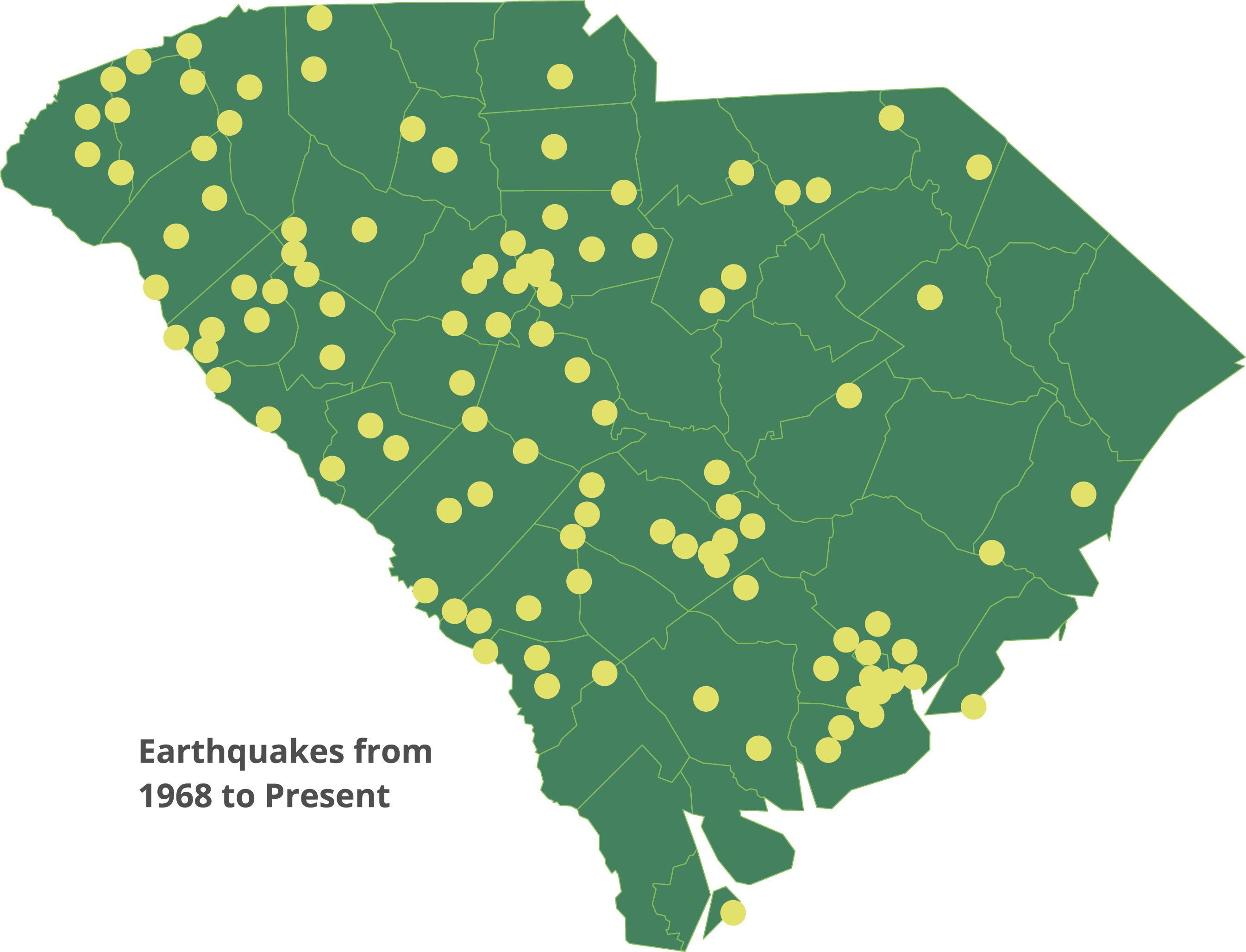Earthquakes are not just something you hear about on the news or see in disaster movies—they’re real, and they can happen closer to home than you think. Morris County, nestled in the heart of New Jersey, has experienced its fair share of seismic activity over the years. While it may not be as earthquake-prone as California, the tremors that have shaken this region serve as a reminder that Mother Nature doesn’t discriminate by location. In this article, we’ll dive deep into the earthquake phenomenon in Morris County, exploring its causes, effects, and what residents can do to stay safe.
Picture this: you're sitting at your desk, sipping your morning coffee, when suddenly the ground beneath you starts to shake. It’s a surreal experience, one that leaves you questioning whether it’s all in your head or if something serious is happening. Earthquakes in Morris County might not make international headlines, but they’re a reality that locals have had to contend with. Understanding the science behind these events is key to preparing for the unexpected.
From historical data to modern-day preparedness, this article aims to arm you with the knowledge you need to navigate the seismic landscape of Morris County. Whether you're a lifelong resident or a newcomer to the area, understanding earthquakes isn’t just about curiosity—it’s about safety. Let’s get started!
- Avery Richardson The Rising Star In The World Of Basketball
- Unlocking The Secrets Of Alpha Phi Vt A Comprehensive Guide
Table of Contents
- Introduction to Earthquake in Morris County
- Historical Earthquakes in Morris County
- The Science Behind Earthquakes
- Assessing the Risks
- Staying Safe During an Earthquake
- Earthquake Preparedness Tips
- Economic Impact of Earthquakes
- Community Response and Recovery
- Predicting Future Earthquakes
- Conclusion and Next Steps
Introduction to Earthquake in Morris County
Why Morris County?
When you think of earthquakes, your mind probably jumps to places like California or Japan, right? But did you know that Morris County, New Jersey, has its own history of seismic activity? While the earthquakes here might not be as intense as those in more famous quake zones, they’re still worth paying attention to. Earthquakes in Morris County serve as a wake-up call for residents to be more prepared and informed.
What Causes Earthquakes in This Area?
It’s not just about tectonic plates rubbing against each other—although that’s a big part of it. The geology of Morris County plays a crucial role in determining the frequency and intensity of earthquakes. Fault lines that run through the region can sometimes shift, causing tremors that range from barely noticeable to mildly unsettling. Understanding these causes is the first step toward preparedness.
And let’s not forget the human factor. Activities like mining and drilling can sometimes trigger seismic activity, even in areas that aren’t traditionally known for earthquakes. So, while nature plays a big role, human actions can also contribute to the seismic landscape of Morris County.
- Joe Dematteo Onlyfans The Untold Story Stats And Secrets You Need To Know
- Eddy Polon Burbank The Untold Story Of A Legend In The Making
Historical Earthquakes in Morris County
Looking back at the history of earthquakes in Morris County reveals some interesting patterns. While major earthquakes are rare, smaller tremors have been recorded over the years. These historical events provide valuable insights into the seismic behavior of the region and help scientists predict future activity.
For instance, the 1884 New York Earthquake, which was felt as far south as South Carolina, had a significant impact on Morris County. While the epicenter was located off the coast of New York, the tremors were strong enough to cause minor damage in the area. This event serves as a reminder that even distant earthquakes can have local effects.
Key Historical Events
- 1884 New York Earthquake: Felt throughout the Northeast, including Morris County.
- 1980 New Jersey Earthquake: A magnitude 3.1 quake centered near Hammonton, NJ, but felt in surrounding areas.
- 2011 Virginia Earthquake: A 5.8 magnitude quake that caused tremors as far north as New York City, with reports of shaking in Morris County.
The Science Behind Earthquakes
Now, let’s get into the nitty-gritty of how earthquakes actually happen. At its core, an earthquake is the result of energy release caused by the movement of tectonic plates. But there’s so much more to it than that. Understanding the science behind earthquakes can help you appreciate the complexity of these natural phenomena.
Types of Faults
There are three main types of faults that can cause earthquakes: normal faults, reverse faults, and strike-slip faults. Each type results in a different kind of movement and can produce varying levels of seismic activity. In Morris County, the presence of certain fault lines increases the likelihood of earthquakes, albeit on a smaller scale.
Measuring Earthquakes
Scientists use the Richter scale to measure the magnitude of earthquakes, but there’s also the Modified Mercalli Intensity scale, which assesses the effects of an earthquake on people, buildings, and the Earth’s surface. Knowing how to interpret these measurements can help you understand the potential impact of an earthquake in your area.
Assessing the Risks
So, how risky is it to live in Morris County when it comes to earthquakes? The short answer is: not very risky, but not completely risk-free either. While the chances of a major earthquake are slim, the possibility of smaller tremors remains. And even small earthquakes can cause damage if you’re not prepared.
Structural Vulnerability
Older buildings in Morris County might not be as earthquake-resistant as newer constructions. If you live in a historic home, it’s worth considering whether your property can withstand even a mild tremor. Reinforcing your home with earthquake-resistant materials is a smart investment for long-term safety.
Infrastructure Concerns
Bridges, roads, and other critical infrastructure in Morris County are designed to withstand certain levels of seismic activity, but no system is foolproof. Regular inspections and maintenance are essential to ensuring that these structures remain safe and functional in the event of an earthquake.
Staying Safe During an Earthquake
When an earthquake strikes, your immediate safety is the top priority. Knowing what to do during and after a quake can make all the difference. Here are some tips to keep you and your loved ones safe:
Drop, Cover, and Hold On
This simple yet effective technique can protect you from falling debris and other hazards during an earthquake. Find a sturdy piece of furniture to take cover under and hold on tight until the shaking stops.
After the Quake
Once the shaking subsides, check for injuries and damages. Be cautious of potential hazards like gas leaks or electrical fires. If you’re unsure about the safety of your surroundings, it’s better to evacuate and seek help from local authorities.
Earthquake Preparedness Tips
Preparation is key when it comes to earthquakes. Having a plan in place and being equipped with the right resources can significantly reduce the impact of a quake. Here are some tips to help you get started:
Create an Emergency Kit
- Water and non-perishable food for at least 72 hours
- First aid supplies and necessary medications
- Flashlights and batteries
- Important documents and contact information
Develop a Communication Plan
Establish a way to communicate with family members during and after an earthquake. Having a designated meeting place and emergency contact numbers can help you stay connected when it matters most.
Economic Impact of Earthquakes
Earthquakes can have significant economic consequences, even in areas where they’re not frequent. Damage to property, infrastructure, and businesses can result in costly repairs and lost revenue. In Morris County, the economic impact of earthquakes might not be as severe as in more quake-prone regions, but it’s still a consideration worth noting.
Insurance and Recovery
Having the right insurance coverage can make a huge difference in the aftermath of an earthquake. Many homeowners’ policies don’t automatically include earthquake coverage, so it’s important to review your options and make sure you’re adequately protected.
Community Response and Recovery
When an earthquake strikes, the community plays a vital role in recovery efforts. Local organizations, emergency services, and volunteers come together to support those affected by the disaster. Building a resilient community is essential for bouncing back from earthquakes and other natural calamities.
Getting Involved
There are plenty of ways to get involved in community preparedness and recovery efforts. Whether it’s volunteering with local disaster response teams or participating in earthquake drills, every little bit helps in creating a safer and more resilient community.
Predicting Future Earthquakes
While predicting earthquakes with pinpoint accuracy remains a challenge, advancements in technology and research are making it easier to forecast seismic activity. Scientists are constantly working on improving their models and methods to better understand the factors that contribute to earthquakes in areas like Morris County.
The Role of Technology
From seismic sensors to data analytics, technology is playing a crucial role in earthquake prediction and preparedness. By analyzing historical data and monitoring current seismic activity, scientists can make more informed predictions about future earthquakes in the region.
Conclusion and Next Steps
In conclusion, understanding earthquakes in Morris County is about more than just knowing the science—it’s about being prepared for the unexpected. While the risk of a major earthquake might be low, the potential impact of even a small tremor can be significant. By staying informed, preparing your home, and getting involved in community efforts, you can help mitigate the effects of seismic activity in the area.
So, what’s your next step? Start by creating an emergency kit, reviewing your insurance coverage, and talking to your family about earthquake preparedness. Together, we can build a safer and more resilient community in Morris County.
Got thoughts or questions? Drop a comment below and let’s keep the conversation going. And if you found this article helpful, don’t forget to share it with your friends and family. Stay safe out there!



Detail Author:
- Name : Giovanni Nicolas DVM
- Username : erutherford
- Email : alize.ernser@gmail.com
- Birthdate : 1970-09-18
- Address : 760 Howell Extensions Kiehnberg, SD 71275
- Phone : 520-354-8263
- Company : Wuckert-Mann
- Job : Signal Repairer OR Track Switch Repairer
- Bio : Velit delectus magnam voluptatibus molestias officiis eius. Est voluptates mollitia consequatur rerum assumenda dolores. Illo quasi eius officiis sit est autem.
Socials
tiktok:
- url : https://tiktok.com/@sstamm
- username : sstamm
- bio : Aliquam occaecati est natus est aperiam non asperiores.
- followers : 944
- following : 1226
instagram:
- url : https://instagram.com/selinastamm
- username : selinastamm
- bio : Temporibus et impedit est accusamus nisi sit. Consequuntur quis impedit delectus.
- followers : 6451
- following : 2830
linkedin:
- url : https://linkedin.com/in/stamm2010
- username : stamm2010
- bio : Sed facere pariatur quibusdam.
- followers : 782
- following : 1483
facebook:
- url : https://facebook.com/selina_dev
- username : selina_dev
- bio : Illum est ut quis maxime recusandae perferendis.
- followers : 626
- following : 2213